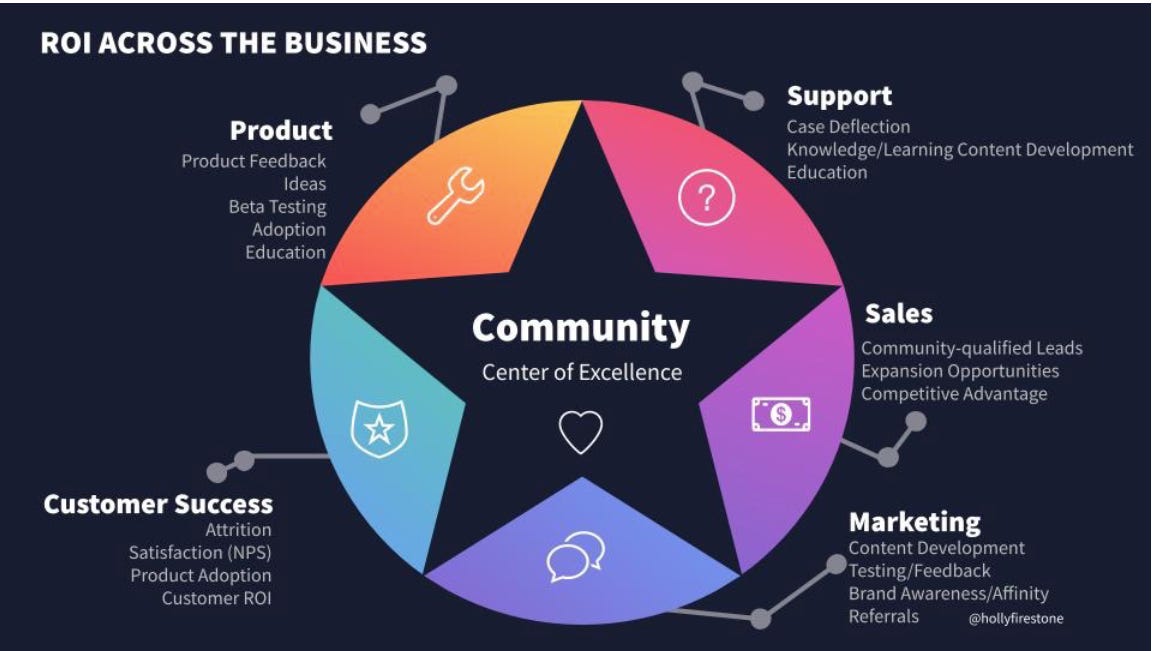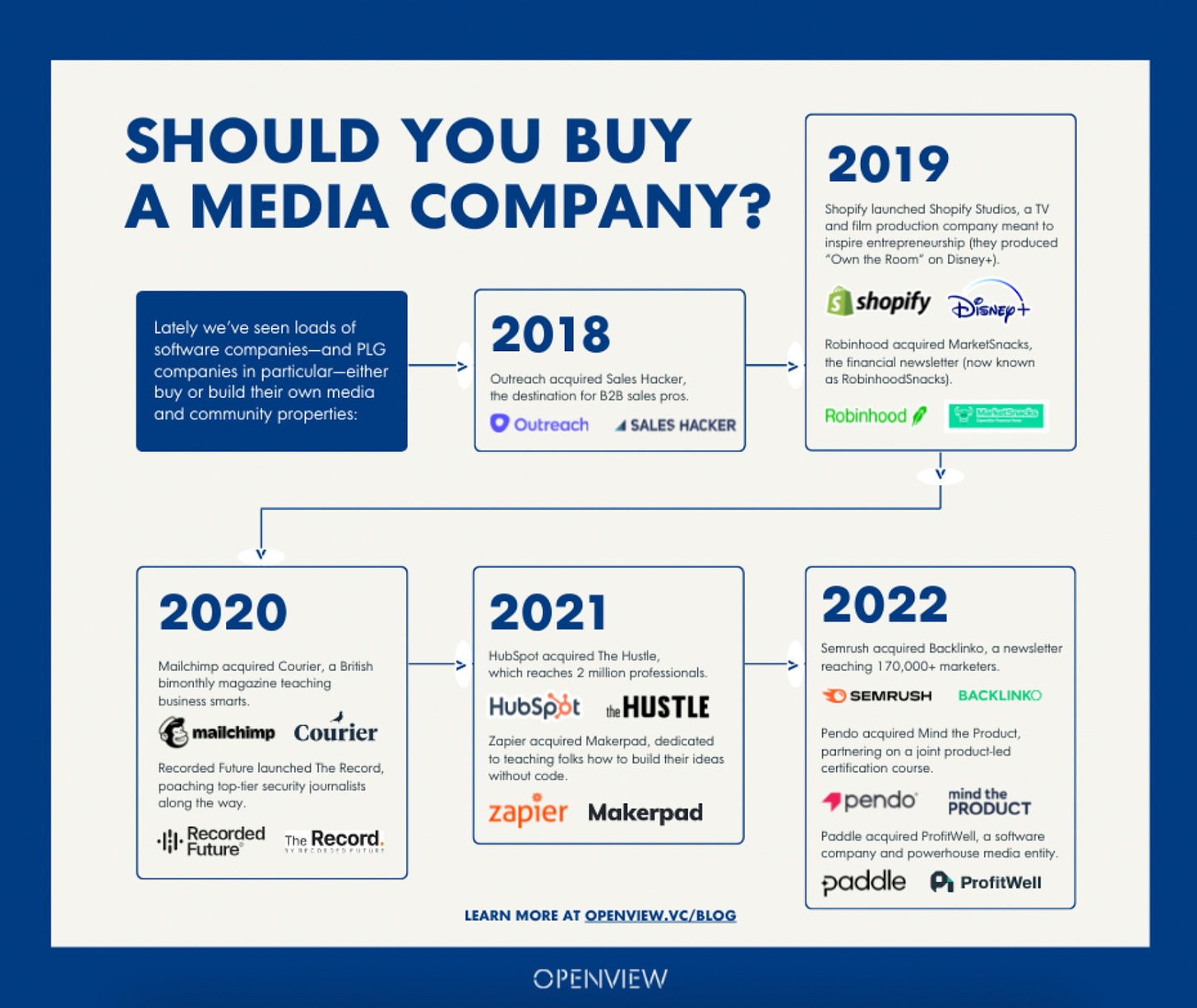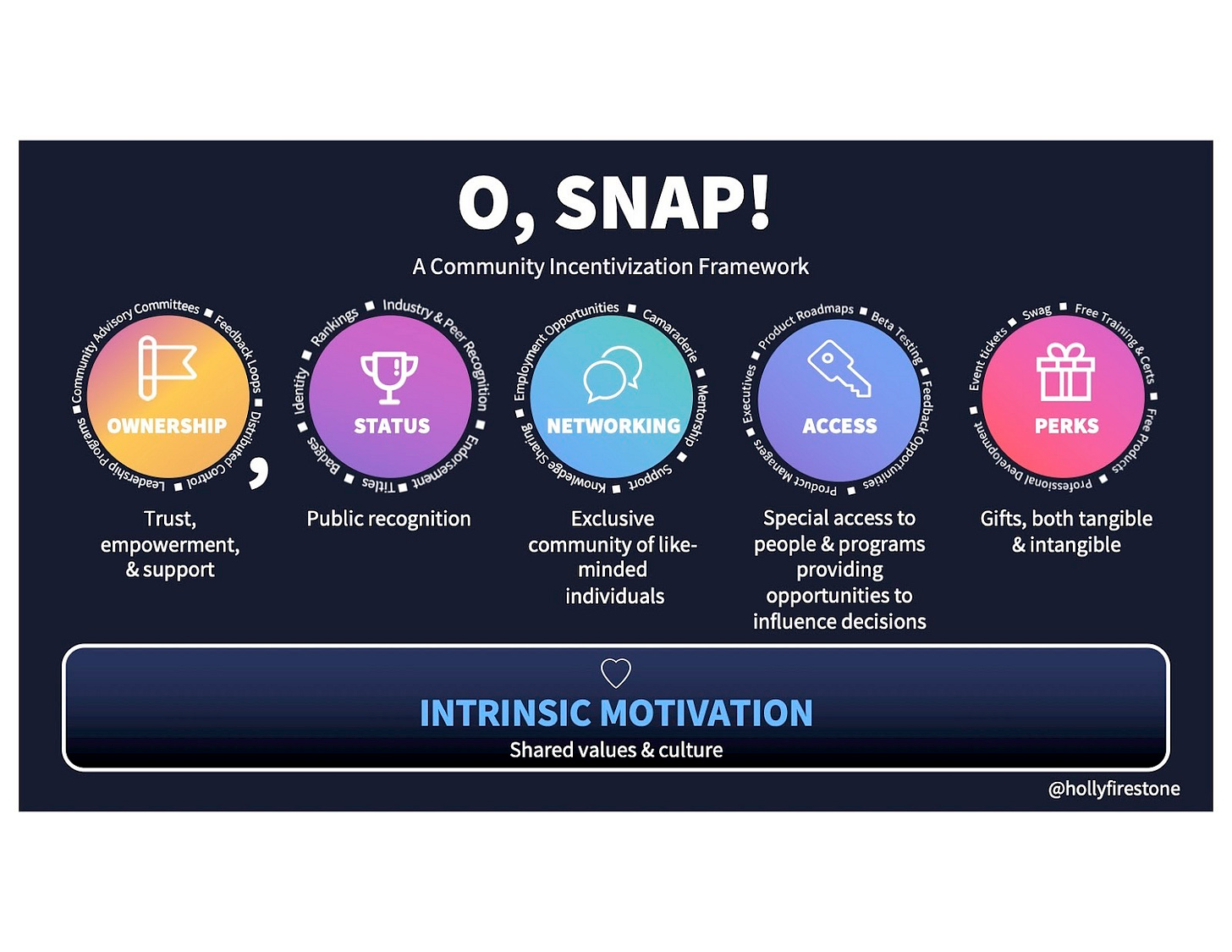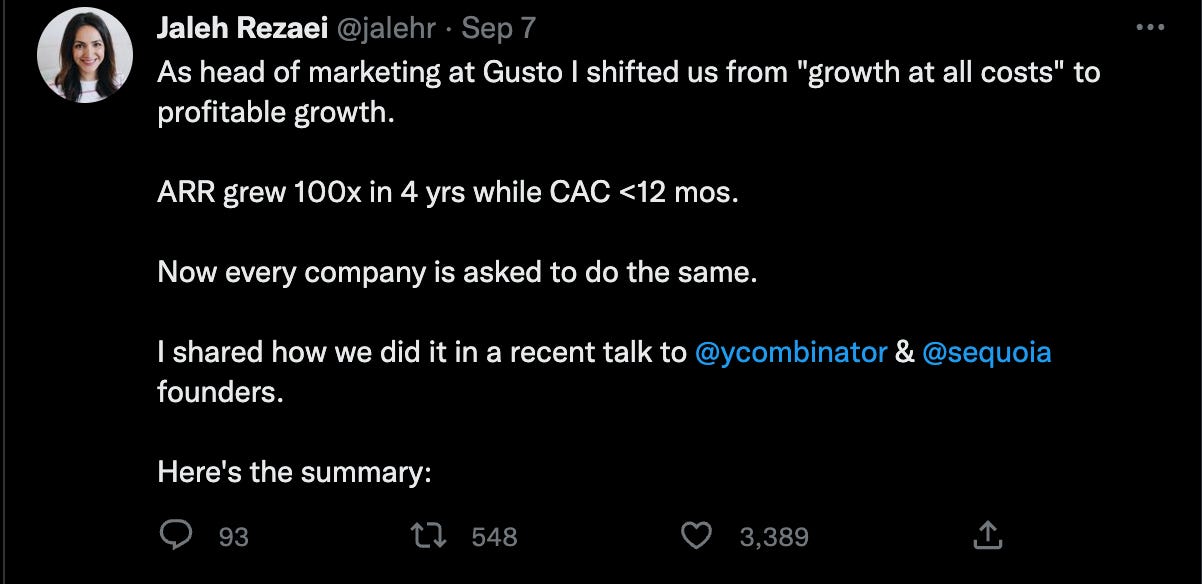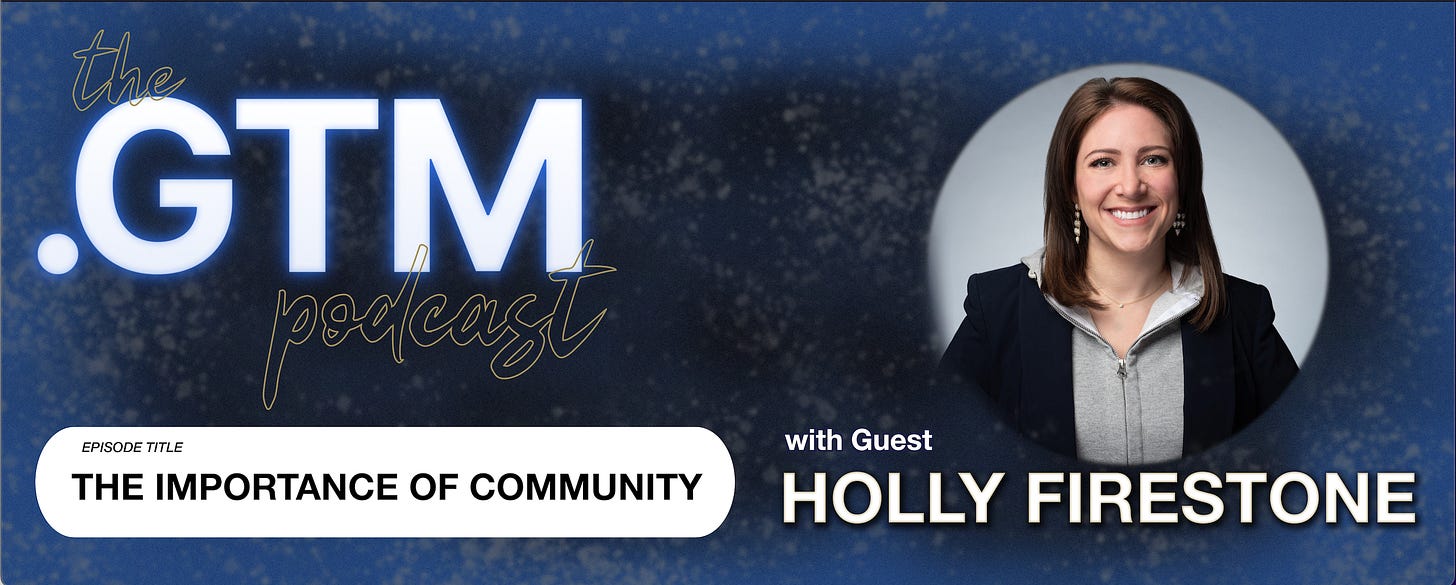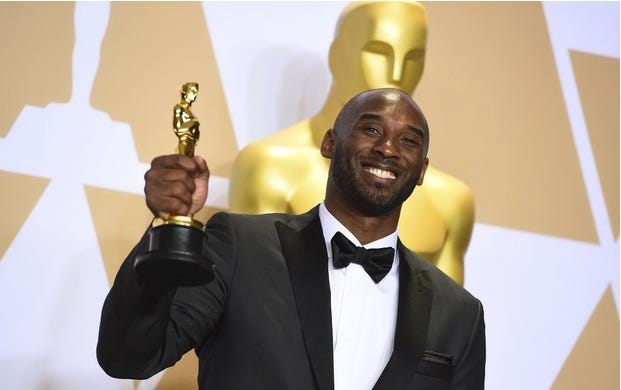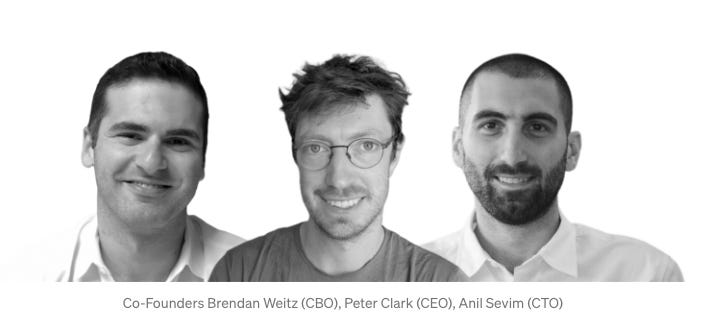The GTM Newsletter
how to build community
Feels good to be putting the metaphorical pen to paper again. ✍️
I appreciate all the kind words and responses on the re-launch.
We’re always open to comments, thoughts, suggestions on how we make this the #1 resource for everything go-to-market.
And if there are topics you want us to explore and write about with insight from our network of 250+ GTM leaders - please do share them with us.
But you are most definitely in the right place if you’re looking to grow and scale your technology company or increase your personal impact across an organization.
Let’s get into it.
How to Build Community
Personally, I think we need to de-fluff the word “community”.
Community, at least in the Tech sector, has been a buzz-word for a long time now.
It’s one of those things that everyone knows they need but doesn’t want to spend a lot of time or resources on.
It’s sort of like buying new socks.
I mean…yea I probably need them but am I really going to get in my car, drive to the store and spend my hard-earned money on socks? Maybe I’ll just wait until Christmas when my mom will likely buy them for me…
*thanks mom*
The thing is: community doesn’t happen by accident and no mom is going to come in and save the day.
Community needs to be very intentional.
Unfortunately there are no shortcuts. It’s a LOT of work but the pay-off of a true community is worth every second of your time/budget.
Below we’re going to try to de-fluff the idea of community and make the case as to why you (as an individual or an organization) you should drop everything & start building community the right way.
The only way I know how to de-mystify the idea of community it to talk talk in terms of ROI, how do we think about the return on investment for standing up a community?
*enter Holly Firestone, EVP of Community at Venafi, former Director of the Salesforce Trailblazers community AND Global Community Lead at Atlassian.*
We recently sat down with Holly on The GTM Podcast and she shared her hard-earned lessons on how to sell community internally to the entire ELT (Executive Leadership Team).
Now I would urge you to listen to the entire episode as it’s laced with gems but what do they say about a picture being worth a thousand words?
Follow Holly Firestone for more here.
📈 How to take action:
Hot take: have Community report directly to the CEO *not* Marketing
Sell community through the lens of “what’s in it for me?” to every leader across your organization.
Community drives value for the Product through: product feedback, new ideas, beta testing, adoption and education.
Community drives value for Customer Success through: attrition, satisfaction, product adoption and customer ROI.
Community drives value for Support through: case deflection, knowledge/learning content development and mass education.
Community drives value for Sales through: community qualified leads, expansion opportunities and increasing your competitive advantage.
Community drives value for Marketing through: content development (UGC and beyond), testing/feedback, brand awareness/affinity and referrals.
Next up, who better to hear from then one of the best community builders in the game, Max Altschuler, former CEO/Founder of Sales Hacker, current founder/GP at GTMfund:
In 2022, Community strategy should be an integral part of every business. But when do you start to focus on community?
Well, it comes in stages.
At first, you have your earliest customers that essentially act as design partners. They tell you what to build. Well, not directly, but through user experience interviews and deep conversations. These are your community seeds. They become your biggest fans if you can execute on their collective feedback and your unique vision for the solution to the problem.
Appreciate them, nurture them, and treat them extremely well as they are also doing you a huge favor. But the scale of community really doesn’t begin until you have product/market fit. And maybe even a little beyond that - when you have product/marketing fit. What do I mean by that? You’ve figured out your category creation strategy or the one you are going to play in.
Every category has a role it supports. HR used to be a category. But now it’s broken up into smaller pieces and each piece has a role. For example, Total Rewards is a category now and there are people within a company that solely specialize in Total Rewards. It’s their entire Job Title. So instead of there being a broader category for HR employees, now there are communities for Total Rewards folks.
It’s much better to build community for a tight-knit niche like this than to start larger. Give a ton of value, for less people, versus a thin layer of value, but for more people. You can always broaden out over time once you’re successful in the smaller niche.
Once you have a thriving community, you can run it for profit, or if you’re a vendor, as breakeven by bringing in complimentary vendors as sponsors.
Outreach acquiring Sales Hacker kicked off a ton of M&A action in the community to SaaS space and it makes too much sense. It’s a great idea to save millions of dollars and at least 2-3 years of time to get to where you need to go. Often time, it's easier to start a community when you’re not a vendor.
Source: OpenView Venture Partners
Follow Max Altschuler for more here.
How to take action:
In the early stage, your design partners will become the seeds of your community. Put them on a pedestal, early and often
Go niche to start, you can always broader your community landscape later
Community does not have to be a cost center, it can be run for profit or as a break even for vendors. Adjacent, complimentary companies will pay to get in front of an active community.
If you have the cash, purchasing a community or media company can save you years of headaches and wasted money on experiments.
Alright, so we covered how to sell a community internally, how to start (or buy) a community but how do you continue to grow it over time?
What’s the flywheel that keeps community members engaged, excited and continuing to come back day in and day out?
*tagging in Holly again for this one*
…I mean she has built three thriving communities at some of the fastest growing companies on the planet so she has definitely earned more than one section in this newsletter.
In Holly’s experience it comes down to having a strong Community Incentivization Framework.
“Show me the incentive and I will show you the outcome” - Charlie Munger
And lucky for us, Holly has broken it all down in an easy to remember acronym SNAP: Status, Networking, Access and Perks.
Let’s break apart each one.
Status: People want to be recognized for who they are, their expertise and what they’ve contributed.
Networking: Creating an exclusive group for them to connect with each other provides immeasurable benefit.
Access: They want to build connections with your company’s decision makes, which provides an opportunity for them to represent the collective voice of the community with the goal of influencing change.
Perks: Use perks to show your appreciation. You can also leverage specific perks to drive and enhance the type of engagement/behavior you want to see.
See the full article for more here.
📈 How to take action:
Elevate status with titles, accreditations for their resume/LinkedIn/community profiles, endorsements and badges.
Create networking opportunities through professional development, knowledge sharing, camaraderie and mentorship
Give community access to your product roadmap, marketing/events, extra support/customer success and policies
Perks can come in the form of swag, free training and certifications, free or discounted product offerings and hands-on professional development
👀 More for your eyeballs:
Interesting tweet/article from a Partner at Craft, former GTM at Dropbox, Slack and Clearbit on Rules for Pricing in SaaS:


Another great tweet thread from the Founder/CEO at Mutiny on how she switched from “growth at all costs” to profitable growth:
And just because this made me 😂:
More for your eardrums 👂
As mentioned earlier, I went deep on community with Holly Firestone in this episode of The GTM Podcast:
I also found some inspiration this week from this interview that Call Fussman conducted with the late Kobe Bryant on: Storytelling and the Awareness of Fear.
Start-ups to watch 🚀
As someone who cares deeply about storytelling, Journey is a company to have on your radar. A remote-first start-up that is building a digital storytelling product for salespeople and founders.
—--------------------------------
Hottest GTM job of the week 🔥
Head of Partnerships at Testbox, full job description here.
See more top GTM jobs here.
—---------------------------------
You made it all the way to the end.
Well done.
Thanks, as always, for rocking with us.
Lots more great GTM content coming your way next week.
See you then.
Barker.
✌️




